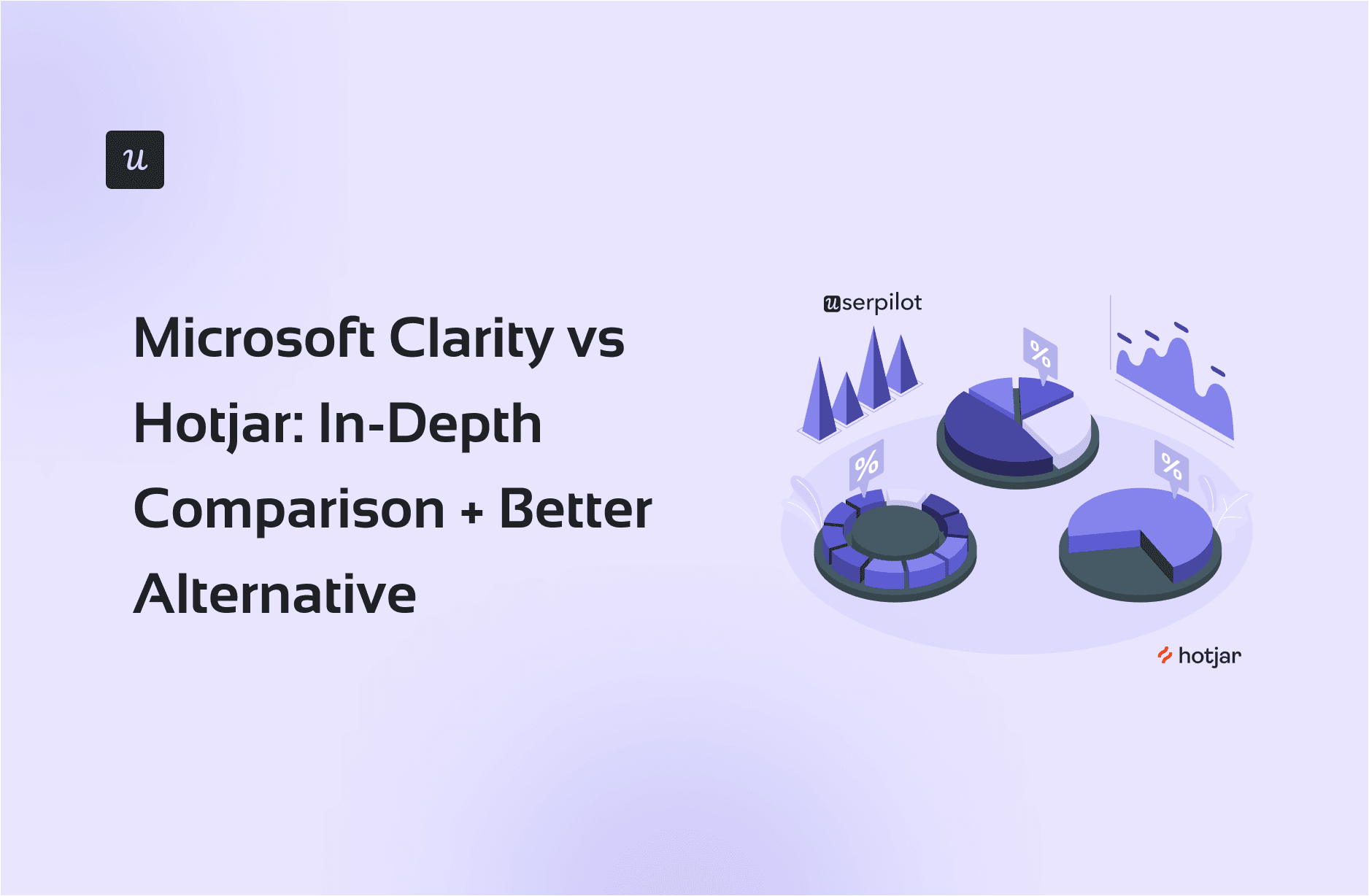
Microsoft Clarity vs Hotjar: In-Depth Comparison + Better Alternative
Is Microsoft Clarity vs Hotjar a better choice for your product analytics needs?
Both tools are quite popular and come with their unique sets of advantages and drawbacks. Ultimately, you should choose the one that better suits your specific business requirements and budget.
In this guide, we’ll go into the specifics of each tool and give you side by side comparison, making it easier for you to pick one.
Try Userpilot Now
See Why 1,000+ Teams Choose Userpilot

TL;DR
- Microsoft Clarity and Hotjar are popular tools with unique pros and cons; choose based on your needs and budget.
- Both tools offer heatmaps, but Hotjar has more advanced segmentation and combines multiple heatmap types, while Clarity offers live visualization.
- Clarity offers live tracking and limited sharing, while Hotjar provides collaboration options and frustration scores.
- Both provide insights into user interactions, but Hotjar allows for customizable dashboards and broader Google Analytics integration.
- Hotjar offers more integrations, including Slack and Jira, while Clarity supports basic tool connections.
- Both platforms have help centers and community forums, but Hotjar offers more personalized support for premium users.
- Userpilot is a product analytics platform tailored for SaaS teams, offering detailed segmentation, funnel analysis, and path analysis, among others.
- Userpilot is a great alternative to Microsoft Clarity and Hotjar. It not only enables you to collect data but also acts on it to boost engagement. Book a demo today!
What is Microsoft Clarity?
Microsoft Clarity is a free user behavior analytics tool that helps businesses understand how users are interacting with individual elements on a website.
For example, you can see how far users are scrolling down a page, how long they are spending on a particular element, and whether they are interacting with certain buttons or links.
It creates detailed heatmaps and session recordings to help you which elements users click on, what they ignore, how far they scroll, and where they get stuck.
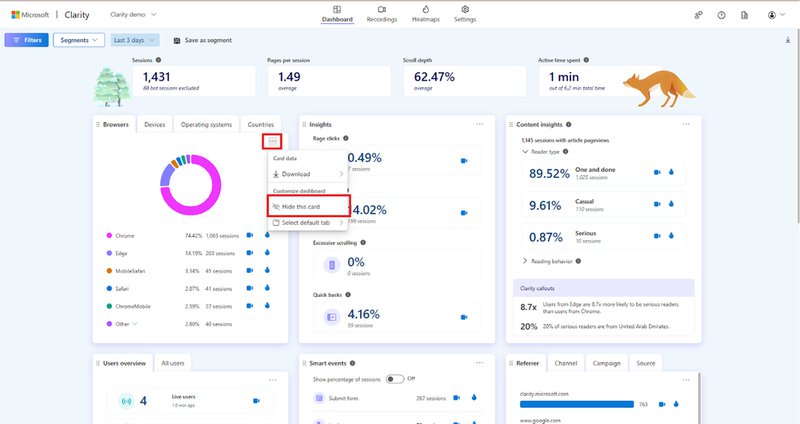
What is Hotjar?
Hotjar is a behavior analytics software that helps businesses understand how users interact with their websites.
With features like heatmaps, session recordings, website feedback widgets, and surveys, Hotjar can help you see how users navigate specific web pages.
You can understand whether there is excessive scrolling from users, which website portions give the most attention, and which page elements hinder conversions.
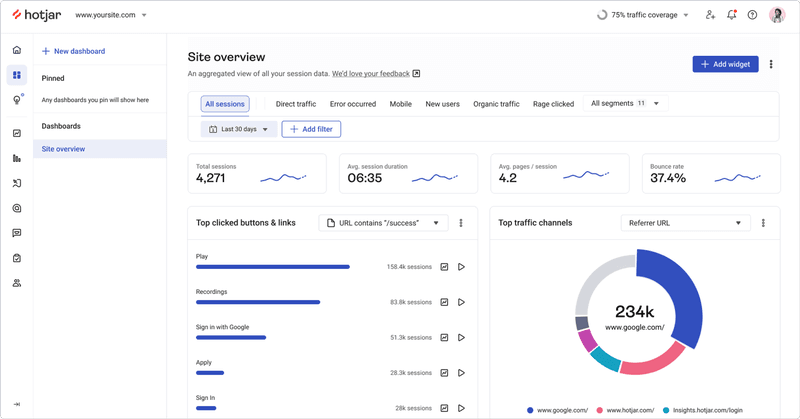
Microsoft Clarity vs Hotjar: Heatmaps
Microsoft Clarity and Hotjar offer similar heatmap tools and features, showing where users click, how far they scroll, and their friction points.
However, they have some key differences.
- Types of heatmaps: Hotjar lets you create move maps which can be integrated with eye-tracking data to reveal areas that grab the most attention. Microsoft Clarity lets you create heatmaps for dead clicks, error clicks, first clicks, and last clicks. Hotjar also lets you combine different types of heatmaps in a simple view known as Engagement Zone. Microsoft Clarity offers the same feature known as Area maps.
- Segmentation: Hotjar has advanced segmentation features that allow filtering by user attributes, device type, and custom tags or events. Microsoft Clarity offers basic segmentation features.
- Live dashboard: Hotjar does not let users visualize live heatmaps. On the other hand, Microsoft Clarity has a free browser extension that lets you visualize click data on your live site.
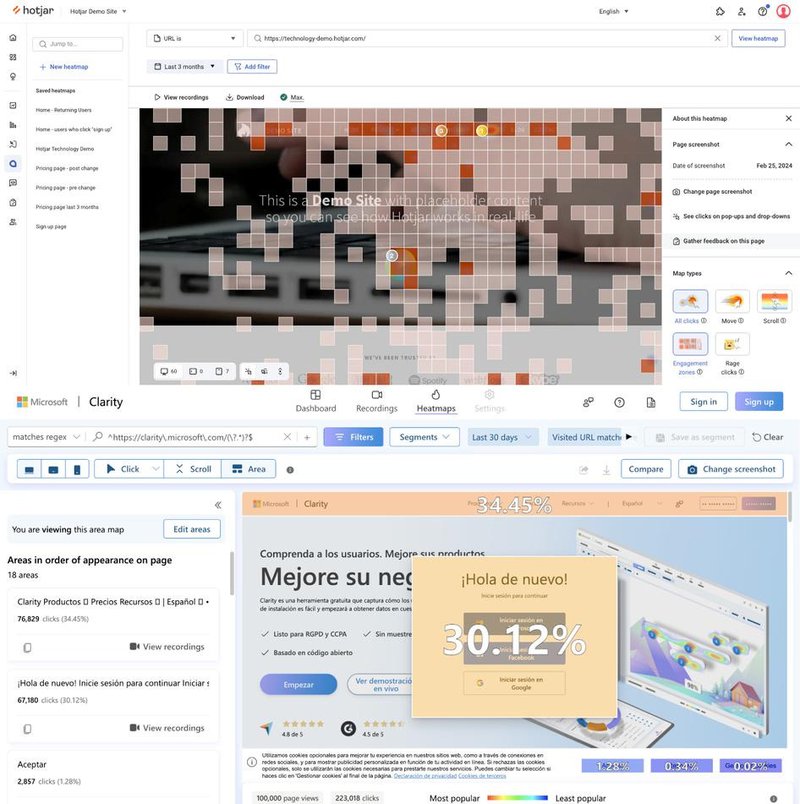
Microsoft Clarity vs Hotjar: Session recordings
Microsoft Clarity and Hotjar both offer session recording features that allow you to track how visitors interact with your website.
However, both platforms differ in certain aspects:
- Collaboration options: Microsoft Clarity only lets you share session recordings via link or email. On the other hand, Hotjar lets you download recordings as CSV or XSLX files and share via link or other tools like Slack. This allows for easy collaboration with teammates.
- Playback data: Microsoft Clarity offers data retention for only 30 days, while Hotjar retains playback data for one year.
- Live recordings: With Microsoft Clarity, you can track user interactions in real time. Hotjar does not have this feature.
- Engagement Score: Hotjar automatically tags every recording with an engagement or frustration score to provide relevant insights into user behavior. Microsoft Clarity does not have this feature.
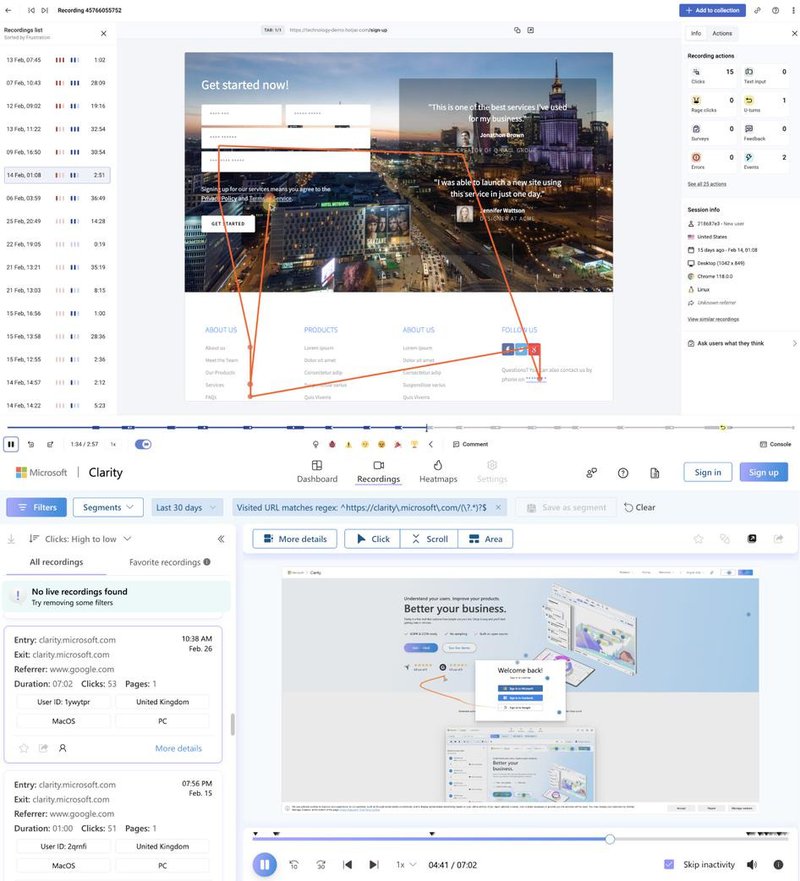
Microsoft Clarity vs Hotjar: User behavior analytics
Hotjar and Microsoft Clarity are powerful analytics tools with metric widgets that provide an overview of your website performance.
They also let you view Javascript errors, rage clicks, and quantitative metrics like pages per session.
Let’s now take a look at their differences:
- Customizable dashboards: Only Hotjar allows you to create unlimited custom dashboards either from scratch or with one of the available templates. These dashboards can show user feedback data like Net Promoter Score. It also shows the progress of certain metrics over time, which can help you measure performance.
- Google Analytics dashboard: Microsoft Clarity has a dedicated Google Analytics dashboard that lets you import GA segments to filter web traffic data. With this data, you can focus on specific user types. Hotjar offers GA segment filtering options from all tools, including heatmaps, feedback, and recordings.
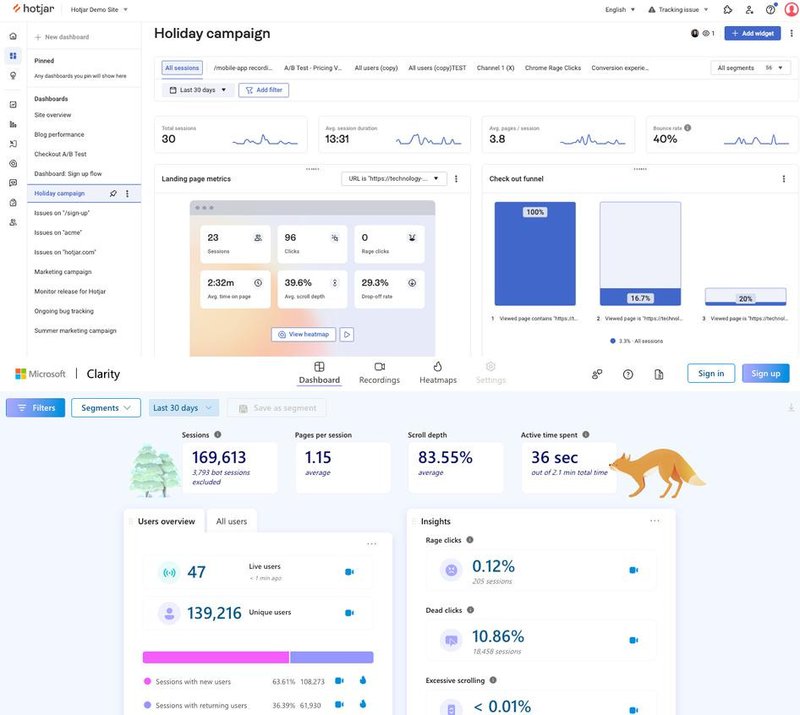
Microsoft Clarity vs Hotjar: Integrations
Microsoft Clarity and Hotjar offer different integration options. Hotjar and Microsoft Clarity integrate with Google Analytics, Optimizely, AB Tasty, Shopify, and WordPress.
However, Hotjar integrates with more tools than Microsoft Clarity, including:
- Analytics tools: Kissmetrics and Mixpanel.
- Collaboration tools: Slack, Microsoft Teams, and Asana.
- Project tracking tools: Linear and Jira.
Microsoft Clarity vs Hotjar: Customer support
Microsoft Clarity has a help center that includes detailed articles and also a community hub where users can post questions.
Lastly, there is email support. Users can reach out to Microsoft Clarity via a direct email or a user and form system on the Clarity website.
Hotjar also provides email and live chat support to all users. You can send a direct email or submit your queries through a contact form.
Like Microsoft Clarity, Hotjar has a help center and a community forum to help users find answers to specific questions.
In comparison to Microsoft Clarity, Hotjar provides more personalized support, though this is available for higher-tier users.
Userpilot: A better alternative to Microsoft Clarity and Hotjar
Userpilot is a powerful product and user behavior analytics platform tailored for SaaS product teams.
Here’s how Userpilot can help you drive user engagement and product adoption:
- Segmentation: Segment users based on their survey responses, NPS scores, and in-app behavior. You can then trigger highly relevant adoption flows based on segments.
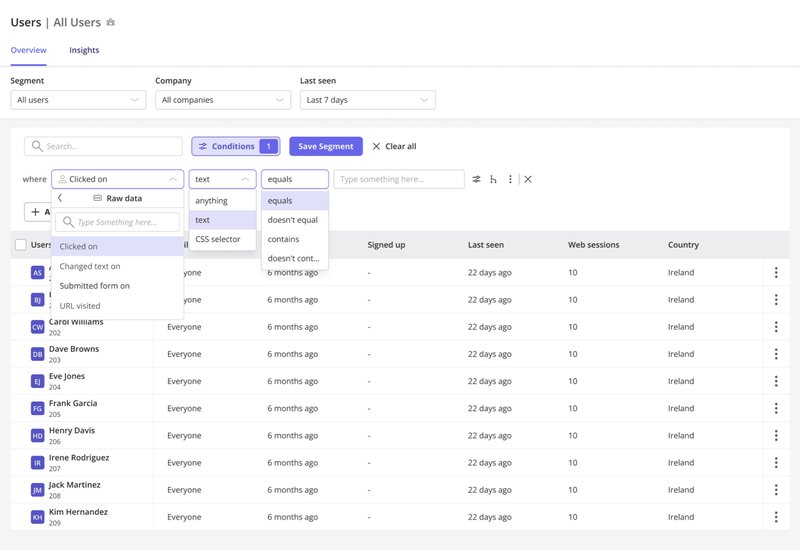
- Funnel analysis: Userpilot’s funnel analytics feature can help you understand how users journey through critical stages of your product. You can identify drop-off points and leverage the detailed insights to optimize the user journey through your conversion funnels.
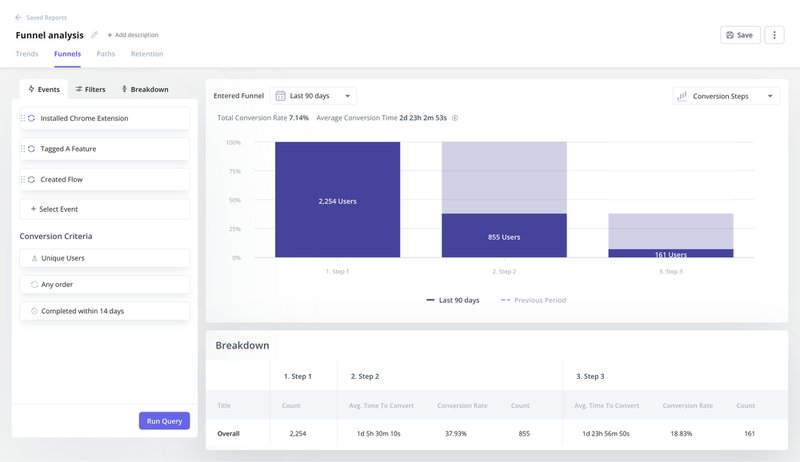
- Path analysis: Visualize and understand the various paths users take within your product. You can choose a starting point and see what steps users take from there, analyze the effectiveness of different paths, and identify the happy path.
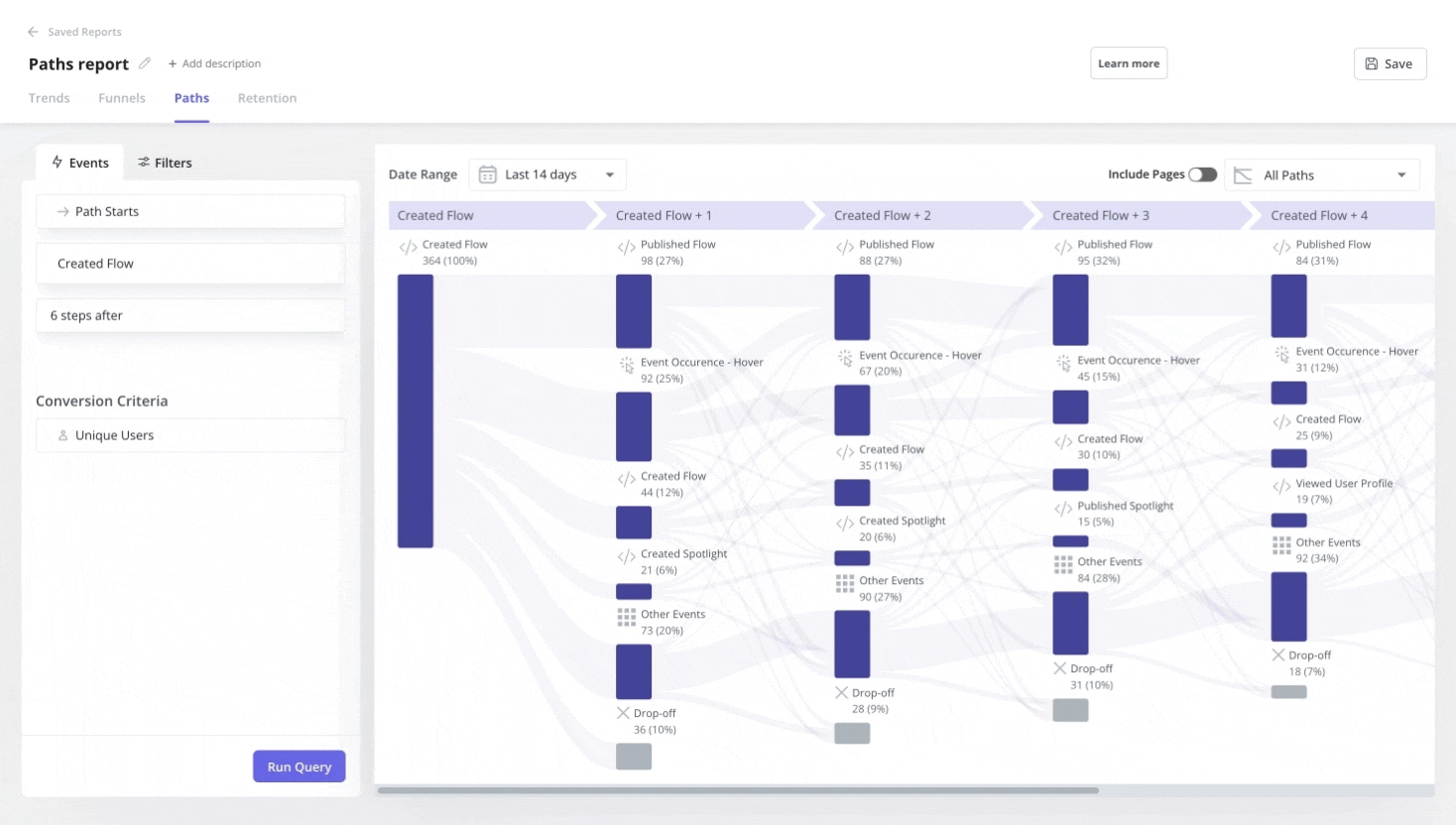
- Cohort tables: You can track user retention rates, spot trends, and understand how users engage with your product after performing a specific action based on cohorts. For instance, Userpilot lets you track how different user groups behave after signing up, onboarding, or activating a feature.
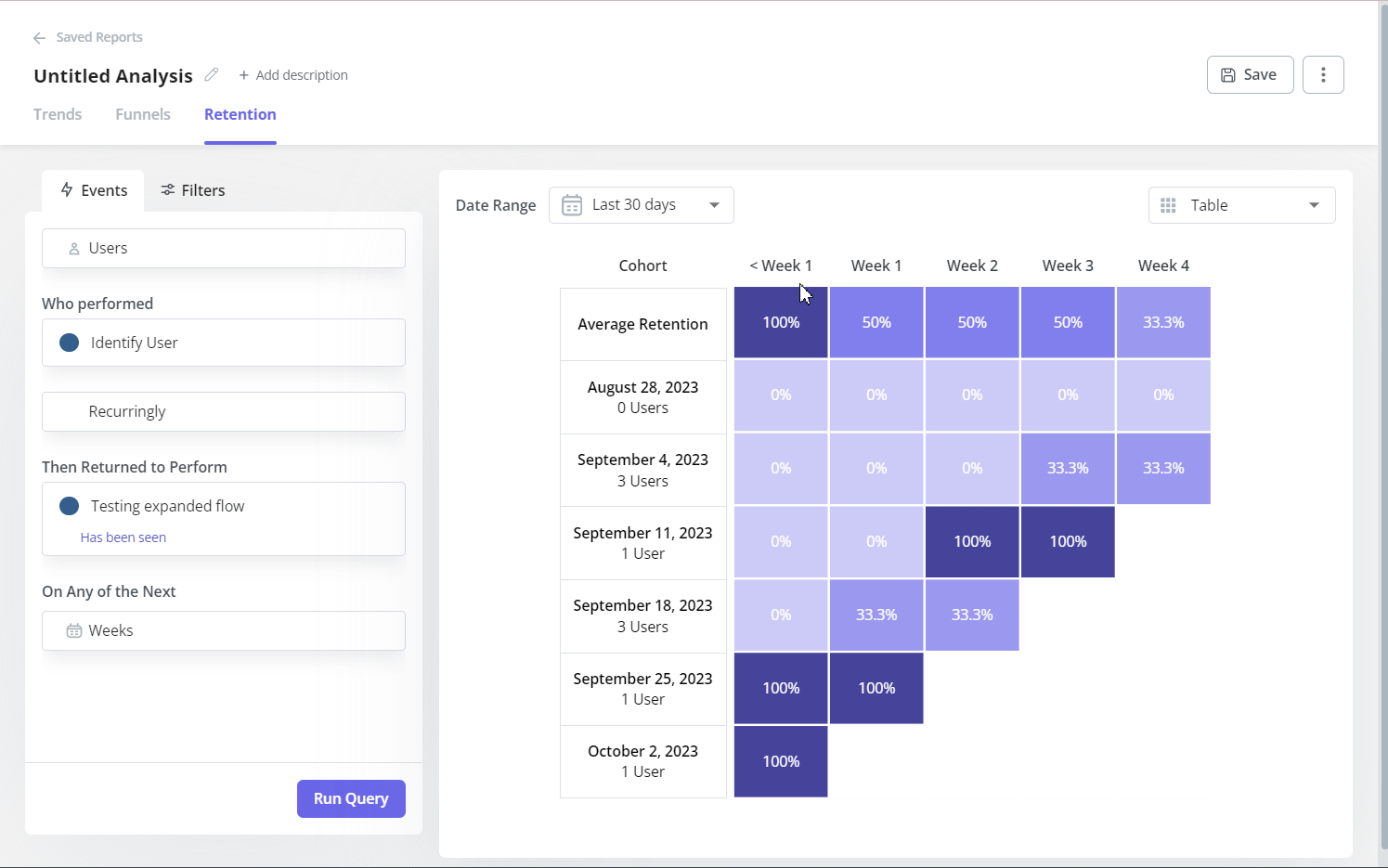
- Analytics dashboards: Userpilot has a robust analytics dashboard that helps product teams track adoption metrics such as the number of active users, average session duration, and feature adoption.
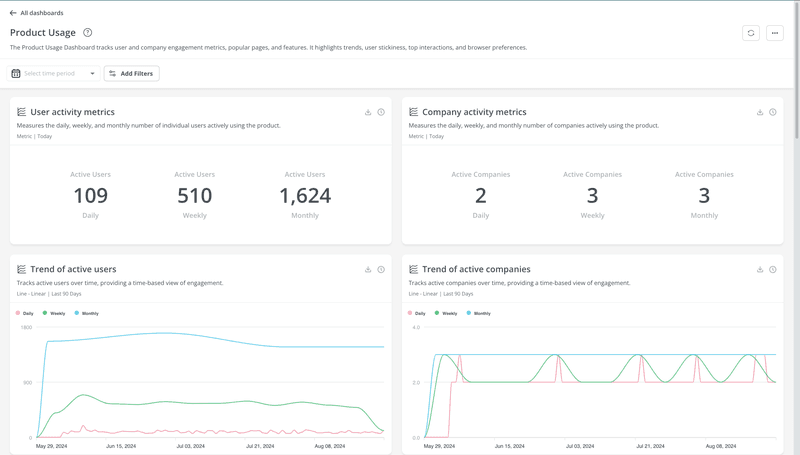
Userpilot pricing
Userpilot’s pricing structure is designed to help your product team align with your product growth goals.
It comprises three pricing tiers:
- Starter: Priced at $299/month (billed annually), the Starter plan supports up to 2,000 Monthly Active Users (MAUs) and includes segmentation, product analytics, reporting, in-app engagement, NPS surveys, and UI customization.
- Growth: This is a custom plan and includes everything in the Starter plan, plus a resource center, content throttling, and content localization.
- Enterprise: This is a custom plan that is priced based on the needs of your business. It includes features like premium integrations, custom roles & permissions, and priority support.
What makes Userpilot stand out?
Here are some
- Dedicated feedback layer: With a dedicated NPS dashboard and feedback analytics feature, Userpilot is a comprehensive solution for user ratings. NPS responses are sent to a dedicated dashboard where you can analyze feedback and key metrics that allow you to gain insights into users’ product experiences.
- Engagement layer to act on analytics insights: You can act on the collected data and trigger personalized in-app experiences, such as messages, onboarding flows, and interactive walkthroughs to improve the user experience.
- High security and certifications: Userpilot prioritizes high security and compliance with industry standards to ensure the protection of your data. The platform adheres to the General Data Protection Regulation (GDPR) and regulations to safeguard user data and maintain high data protection standards.
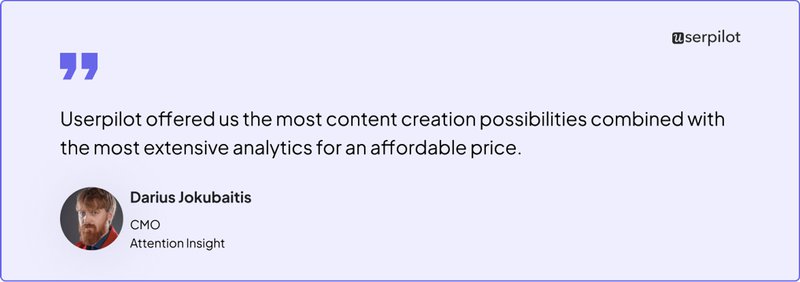
Conclusion
The Hotjar vs Microsoft Clarity debate often centers around their features, ease of use, and overall value for different user types.
Ultimately, your choice will depend on your specific requirements, budget, and the depth of analytics and feedback features you need.
Userpilot is a strong alternative to Hotjar vs Microsoft Clarity, particularly for product teams that focus on enhancing user experience through in-app engagement. Book a demo today!







